The Rural Air Service (RAS) of Malaysia is a series of air routes across the states of Sarawak and Sabah in Malaysian Borneo. These are Public Service Obligation (PSO) air routes, where an airline is contracted to operate daily flights to various localities to provide quick and convenient access in the absence of reliable ground transportation. Like most PSO flights worldwide, the cost of running the RAS flights are subsidised by the Malaysian Government.
The RAS in Sarawak links a number of remote settlements and towns in the interior of the state, with the bulk of the routes in the northern region of the state. One of these is Marudi, a small town along the River Baram some 44 kilometres east of Miri, the largest city in the area. The problem with getting to Marudi is that the roads are narrow plantation access roads, and crossing the River Baram requires a trip on Roll On-Roll Off ferries in the absence of a bridge. This is where the RAS flights step in to provide quick and convenient connection between Marudi, Miri, and the rest of Sarawak.
The RAS flights into Marudi had caught my eye some years back and I had been planning to give it a go for a while now. Conveniently enough, I also needed to get myself away from work for a weekend, and a quick visit to Miri and Marudi did the trick perfectly.
Buying my tickets
The RAS flights are operated by MASwings, a subsidiary of Malaysia Airlines. Tickets may be booked either directly on the MASwings website or through the Malaysia Airlines website.
For this run between Miri and Marudi, I paid RM 145.00 (incl. charges and taxes) for a return ticket.
I was originally booked for the 11:35 am departure from Miri and the 4:00 pm departure from Marudi, which would give me around 4 hours to explore Marudi. A week before the flight, however, I was notified that my 11:35 am departure had been retimed to 2:00 pm. This was a ridiculous switch as it would have given me less than 2 hours to explore Marudi.
The MH help desk was able to rebook me on the 9:20 am MH 3590 departure from Miri which gave me a whopping 6 hours to explore Marudi, but my trip would have been severely affected by this nonsensical re-timing if I wasn’t as fortunate. I found the whole thing less than amusing, frankly.
Departure experience at Miri Airport
Miri Airport is a small-ish airport with a single storey driveway, sporting a KLIA-esque design after its upgrade in the early 2000s.
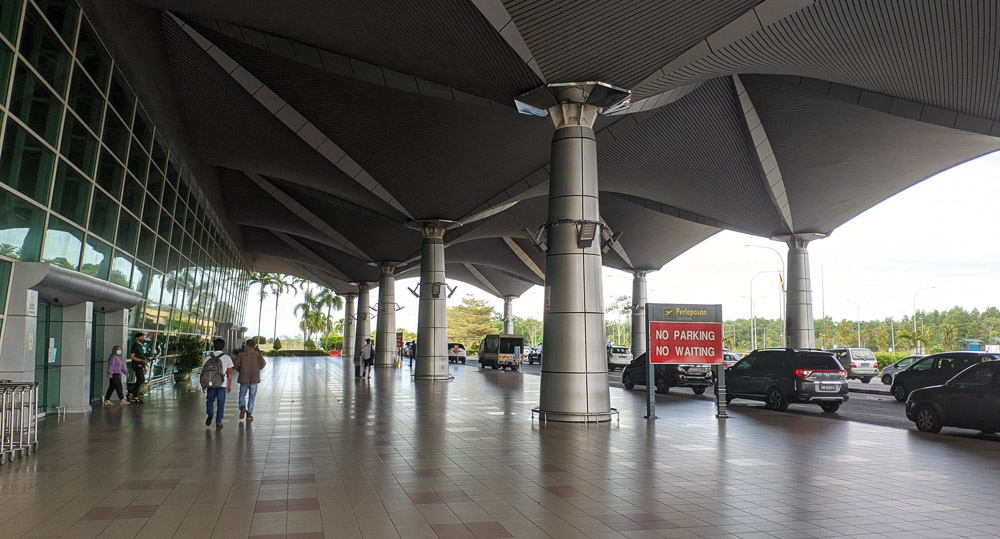
Check in at Miri Airport
Flights between Miri and Marudi are operated by DHC-6 Twin Otters. Passengers on all MASwings Twin Otter flights are required to check-in physically at the airport, with the counters closing 45 minutes before departure. The counter staff was nice enough to check me in for both my flights that day, saving me the need to check in at Marudi for the return sector.
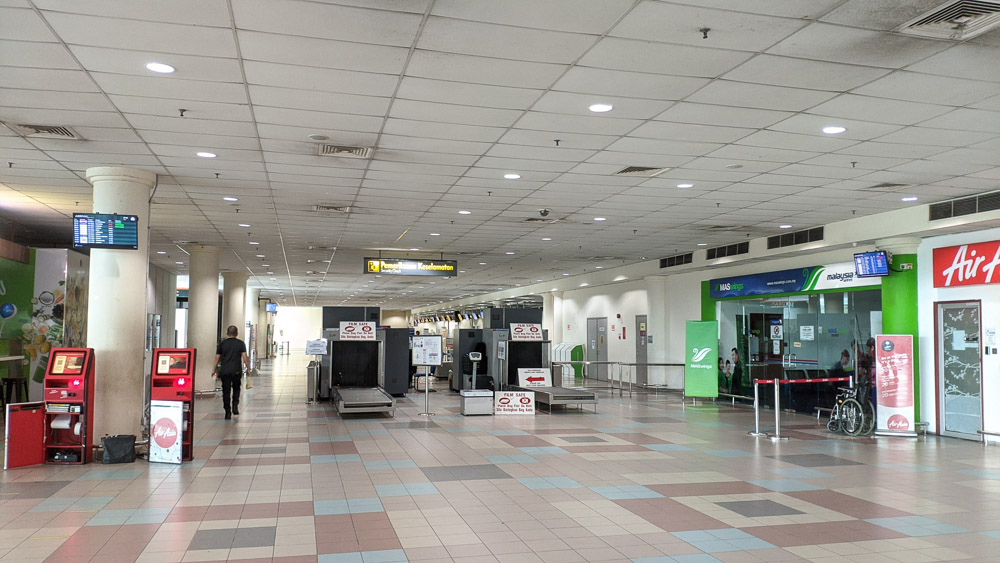
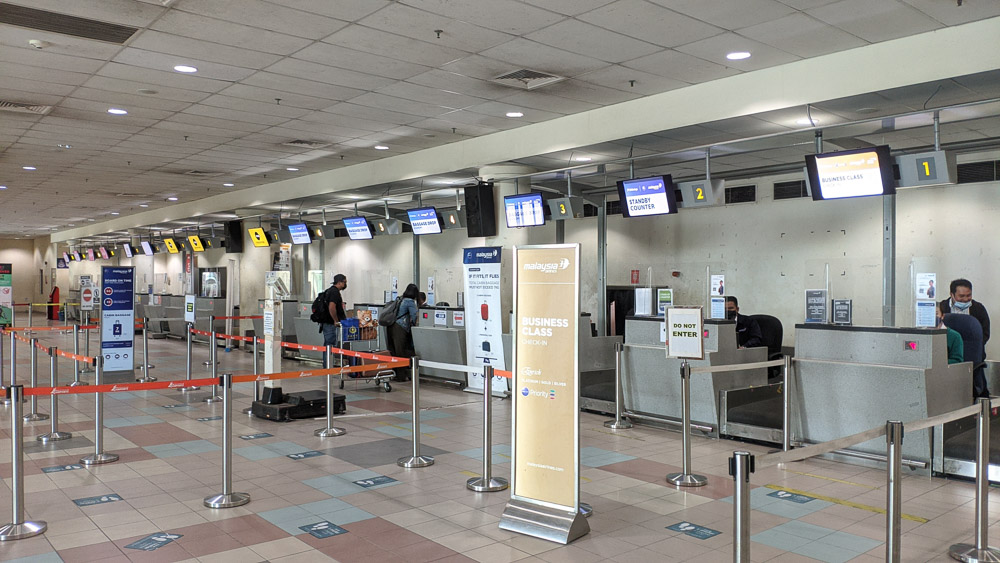
A quirk of flying on the Twin Otter is that passengers are weighed with their hand luggage at check-in, with the readout then printed on the boarding pass. This is for weight balancing purposes as the smaller Twin Otter is a lot more sensitive to weight distribution than larger aircraft. All passengers get a 10kg check in baggage allowance on MASwings Twin Otter flights.
Miri Airport doesn’t have much in the way of food, but it does have a Starbucks and a Marrybrown outlet. With more than an hour to go before my flight, I had just enough time to grab a pastry and Latté breakfast at the Starbucks.
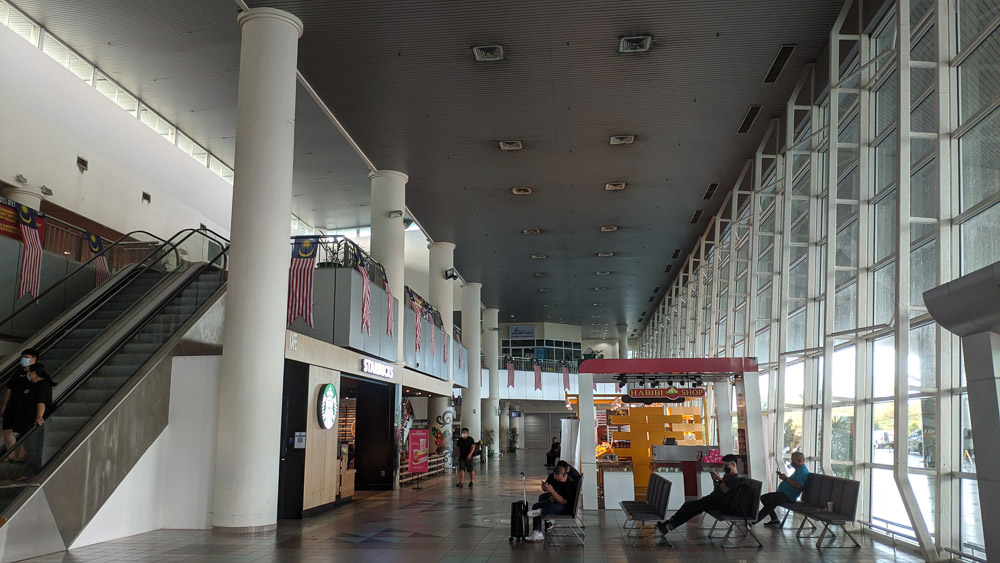
Both Sarawak and Sabah have immigration autonomy and maintain their own layer of border control at entry and exit points. As my flight was an internal Sarawak flight, I could walk straight to the security checks and the gate area, which oddly enough is shared by all flights, including international ones.
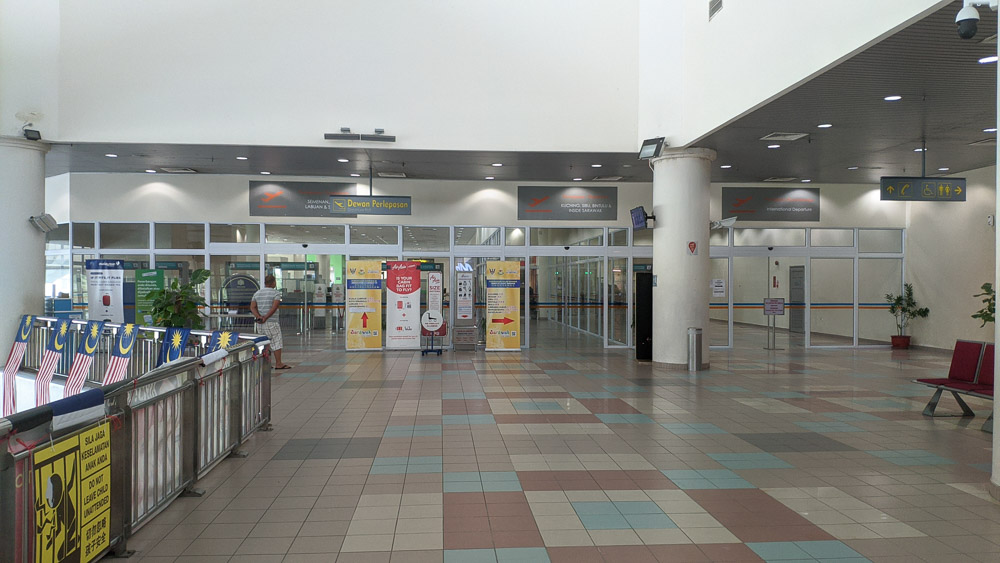
Miri Airport’s gate area is essentially a large common holding area with no individual gate rooms. This means it can get rather crowded if there are several flights departing at once.
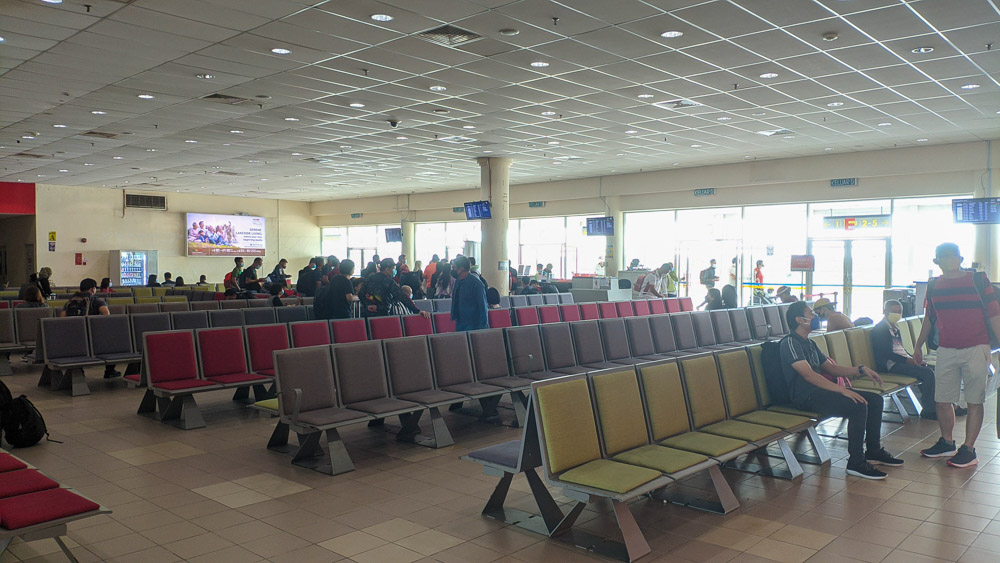
Our boarding passes were checked at Gate A, and we were led down the interstitial corridor, down a flight of stairs, and down into a separate holding area at ground level.
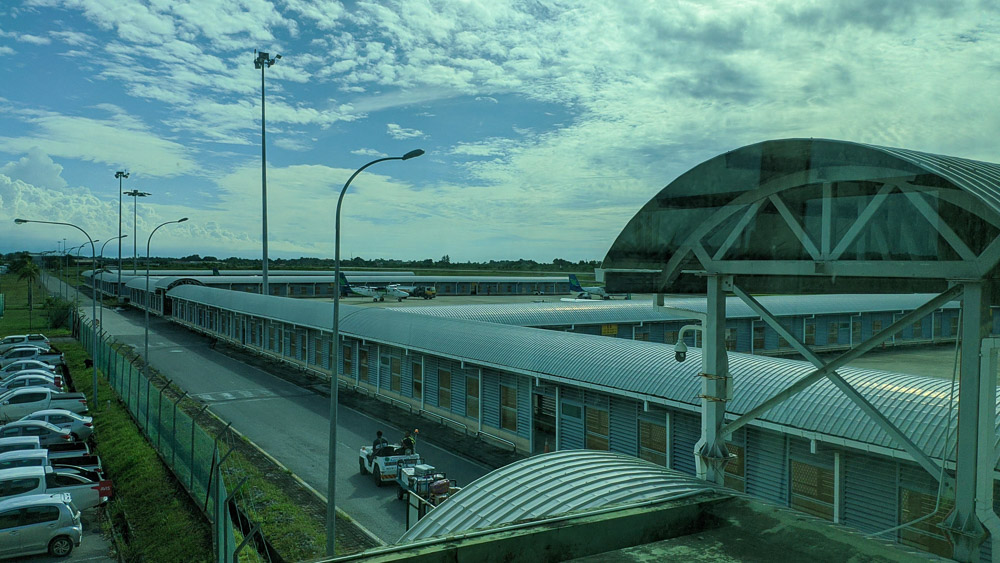
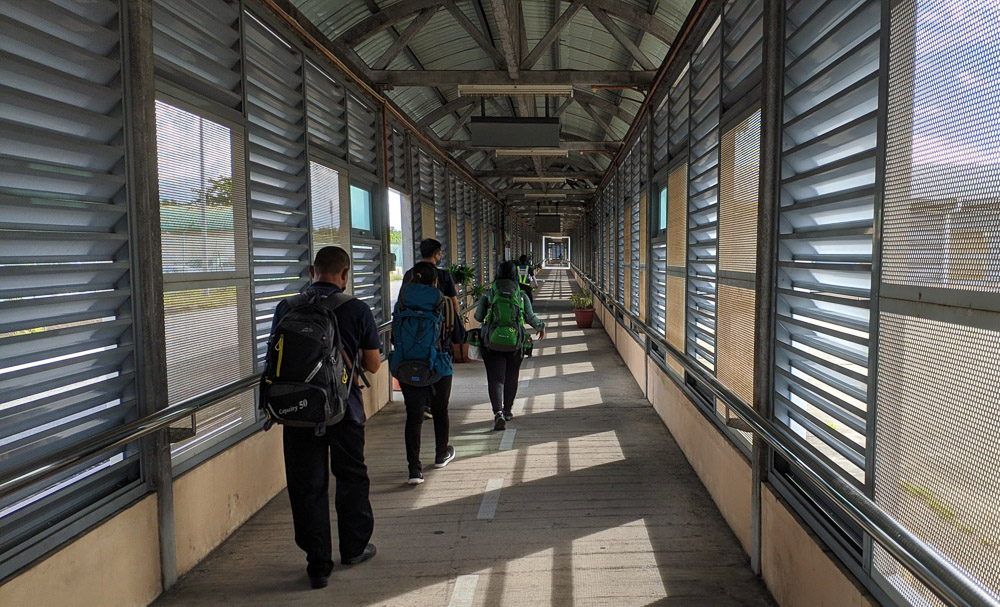
Once all passengers for the flight were accounted for, a MASwings staff led us out through a set of roofed walkways on the tarmac.
Boarding the Twin Otter at Miri Airport
The northern apron at Miri is dedicated to Twin Otter ops. Miri’s proximity to the northern settlements makes it a natural hub for RAS operations as compared to Kuching, the state capital in the far south.
Operating our flight was 9 year old 9M-SSA, built by Viking Air Ltd in BC, Canada in April 2013. – SSA is named after Bario, a community of villages located in the Kelabit Highlands in northeastern Sarawak.
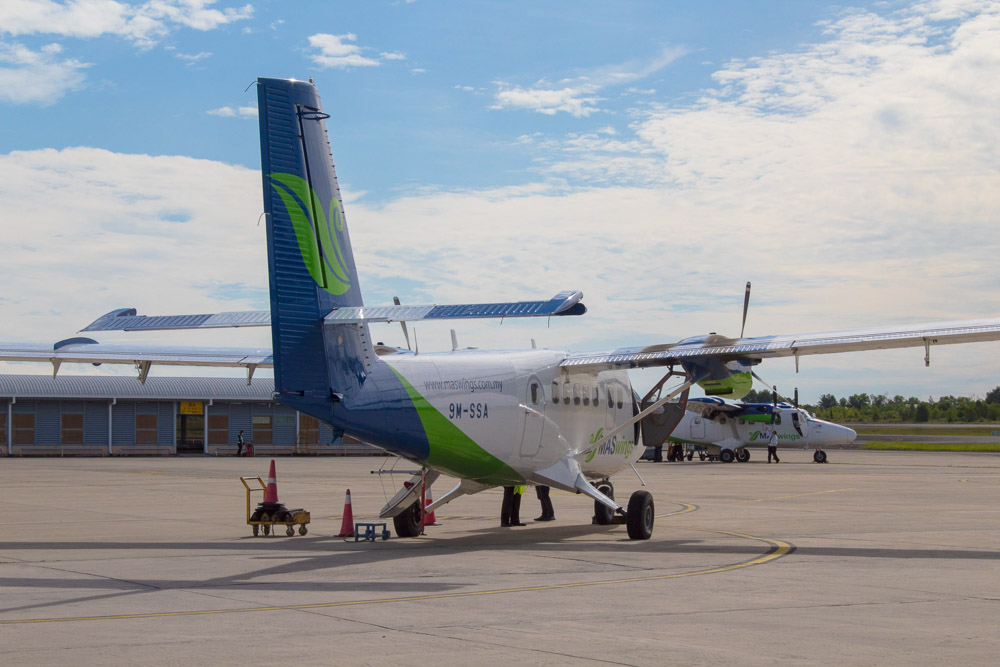
The Twin Otter is a rather self sufficient aircraft. Luggage is loaded manually into compartments in the nose and tail, passengers board through built in air stairs that double as a door, and the tiny aircraft doesn’t need a pushback tug either.
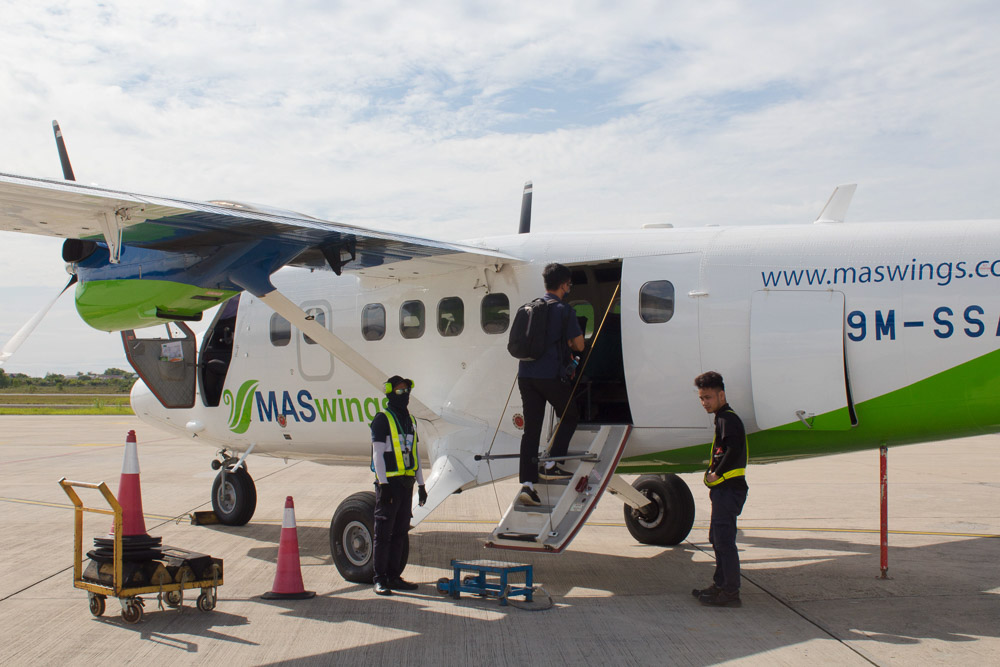
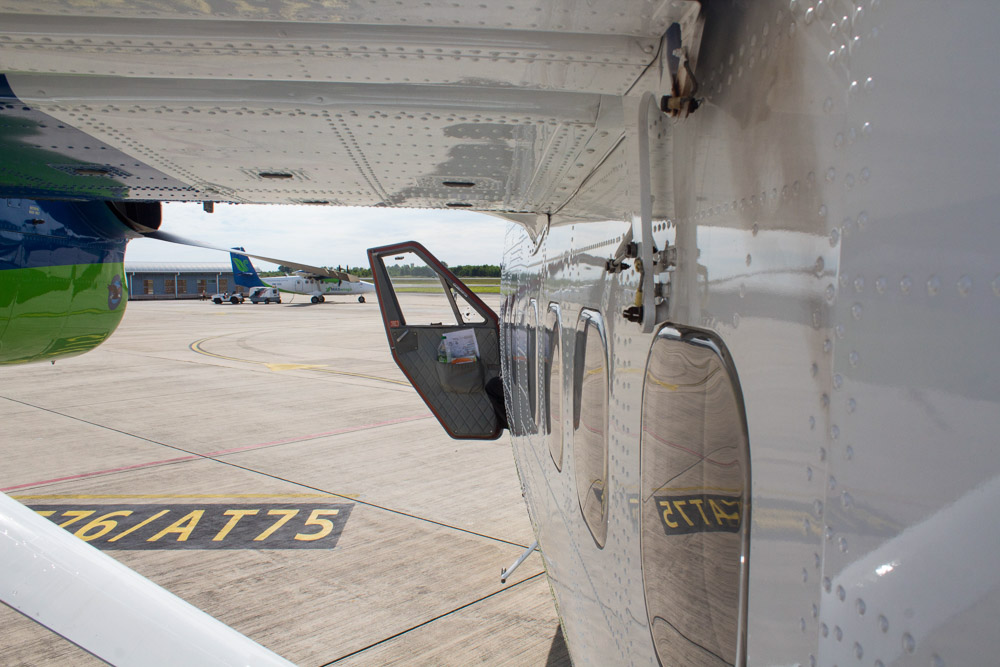
STOL departure from Miri Airport
With only 6 passengers onboard, the doors were soon closed and the pilots started up the twin Pratt and Whitney PT6A-34 engines for a quick taxi out onto the runway. I definitely wasn’t prepared for the way the cabin vibrated along with the twin engines – You do get a sense of how small and basic this plane is compared to the bigger jetliners.
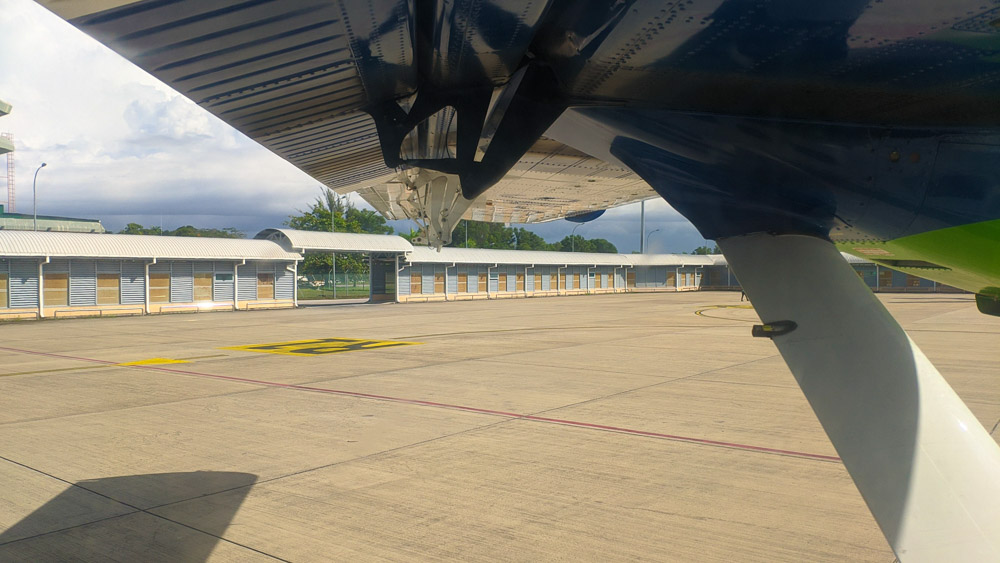
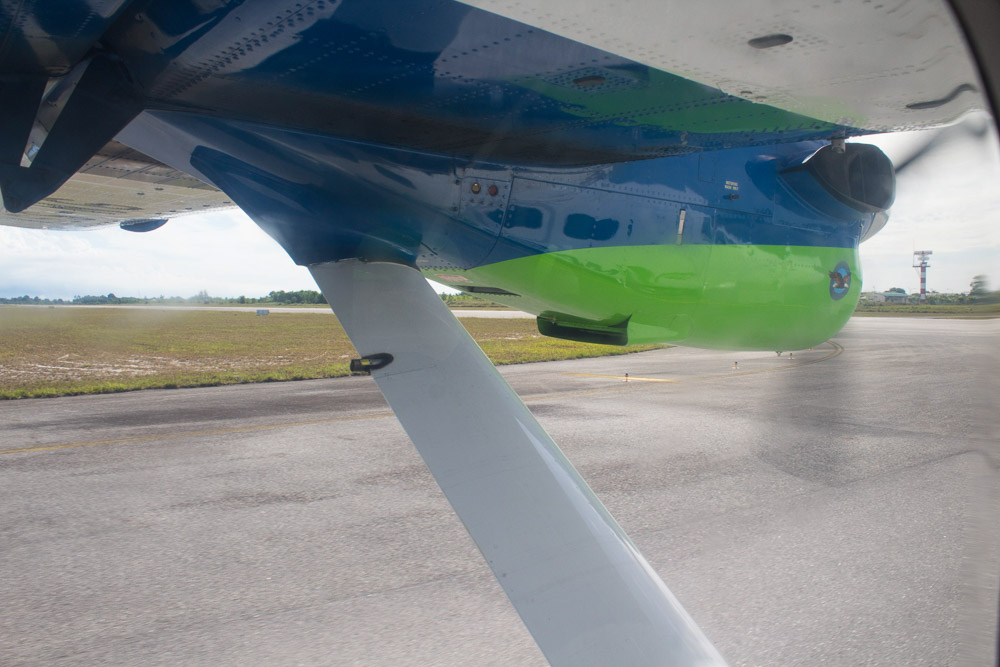
Despite runway 20 being in use at Miri that morning, our pilots elected to do a runway 02 take off that morning from the mid point in the opposite direction. What followed next was one of the shortest takeoff I’d ever sat through in my life – our pilots ran the engines up to full power, and the aircraft then rocketed forward when the brakes were released.
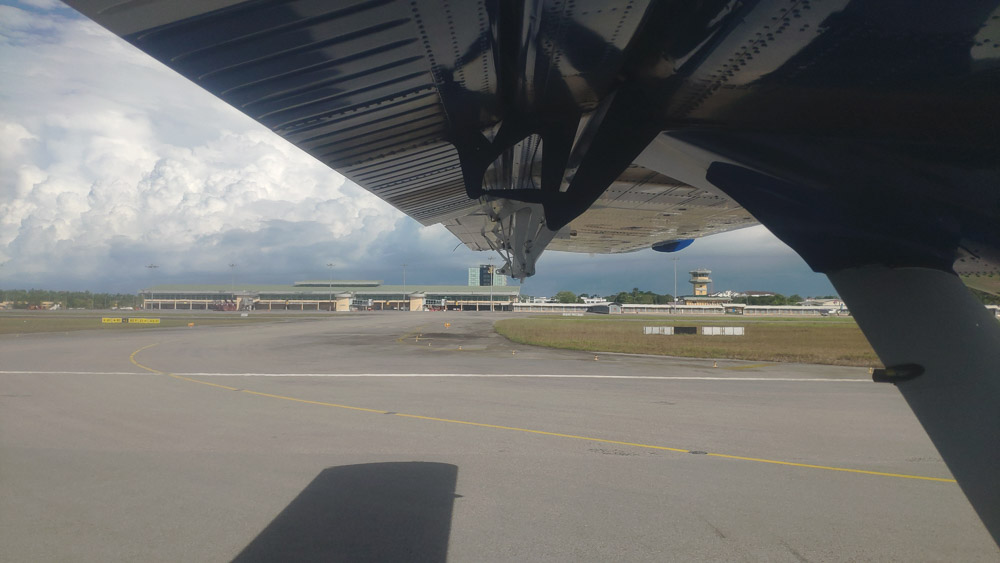
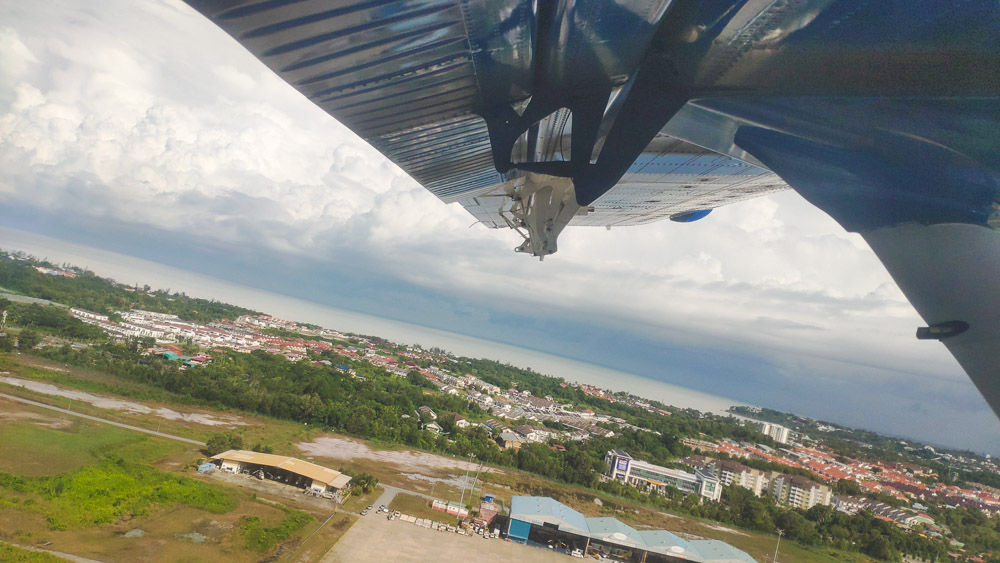
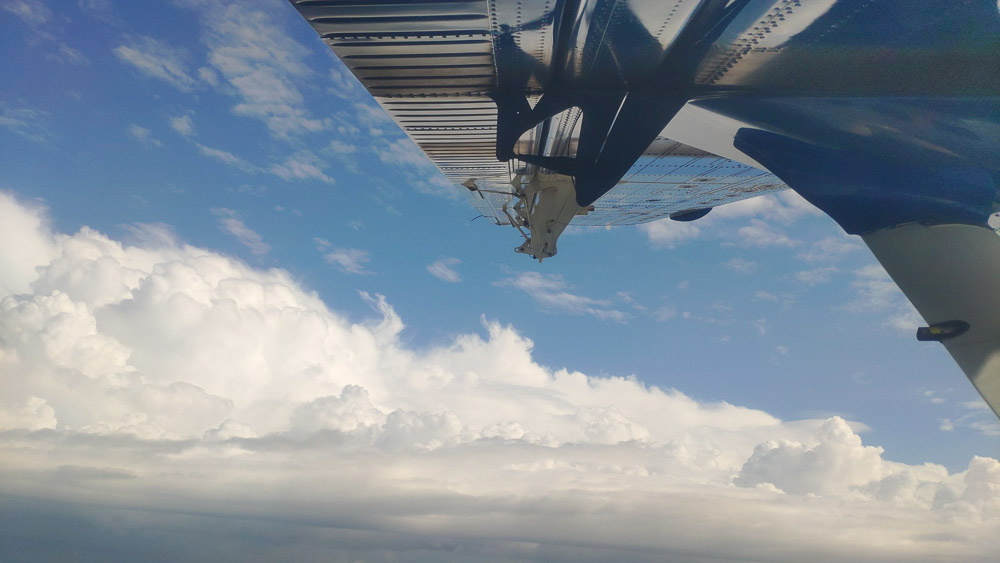
A takeoff run of half a kilometre later, and we were very much up in the air buzzing our way to Marudi. This excellent STOL performance is why the Twin Otter remains a popular choice for operations into remote areas with short runways (both paved and unpaved!).
Cabin & Onboard Amenities
The cabin onboard Twin Otters are very basic – there are no toilets, no flight attendants, and no onboard meals. You do get personal air vents, but that’s about it.
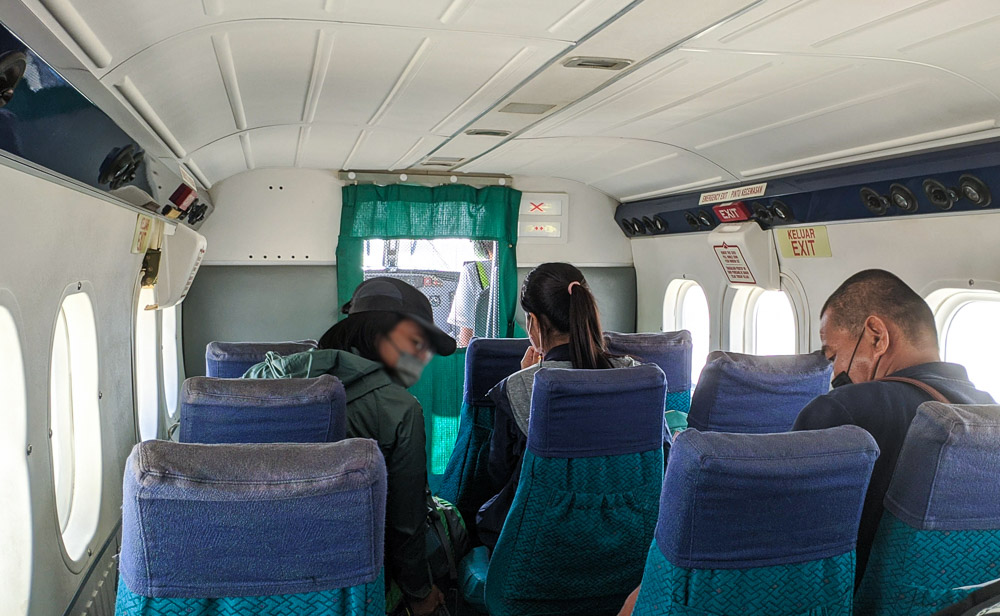
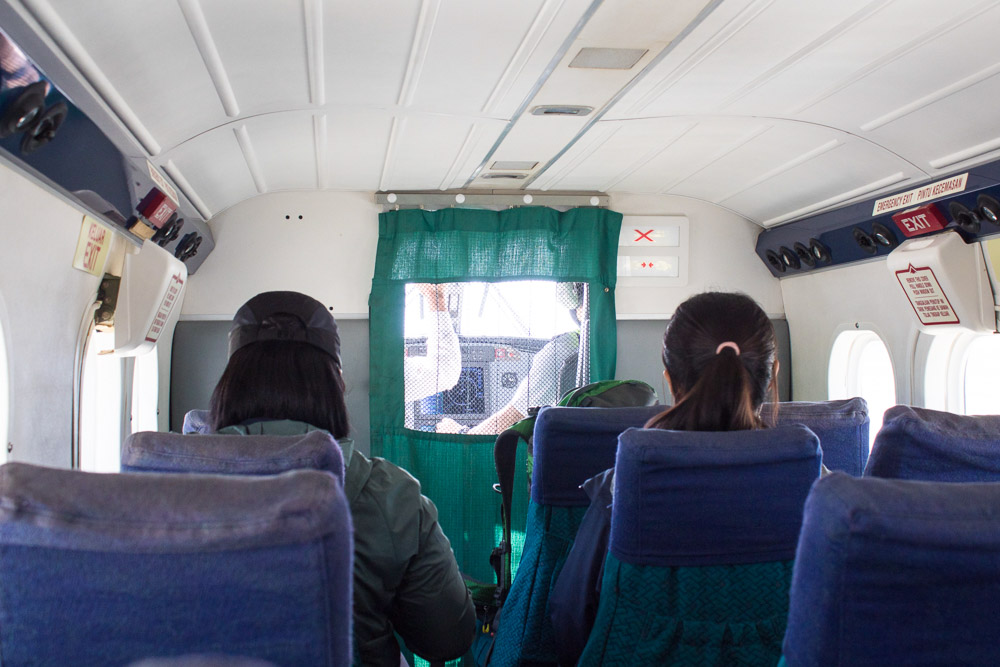
The legroom was tight, but this is a very small aircraft built to fly short interior routes so it would be unreasonable to expect anything more.
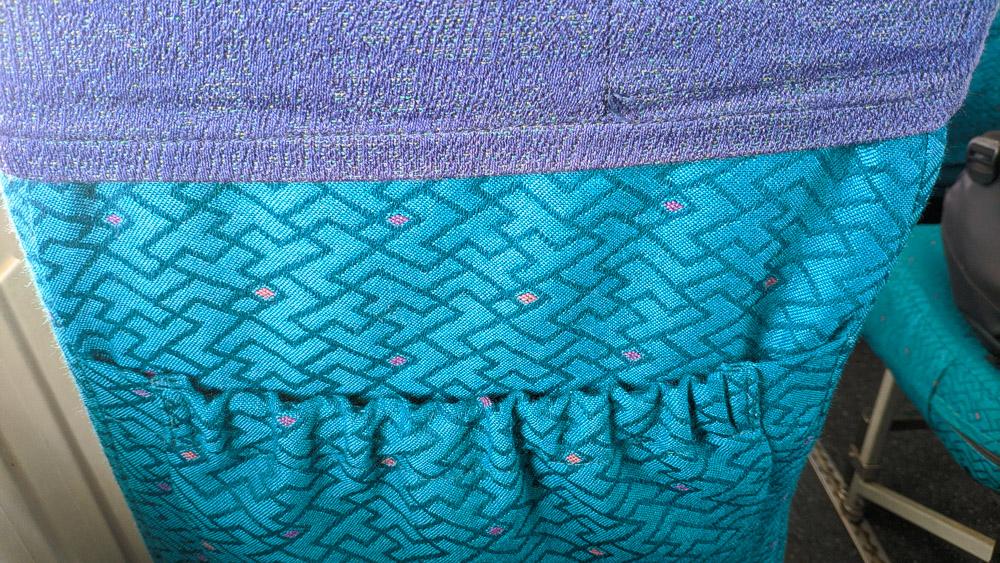
The seat covers onboard the aircraft also seem to be a re-use of Malaysia Airlines’ old Economy Class seat covers last seen on their now out of service B747-400s and B777-200ERs. I hadn’t seen those in ages so it was a pretty nostalgic moment. The intricacy of the patterns also gave the cabin a slightly more “premium” feel.
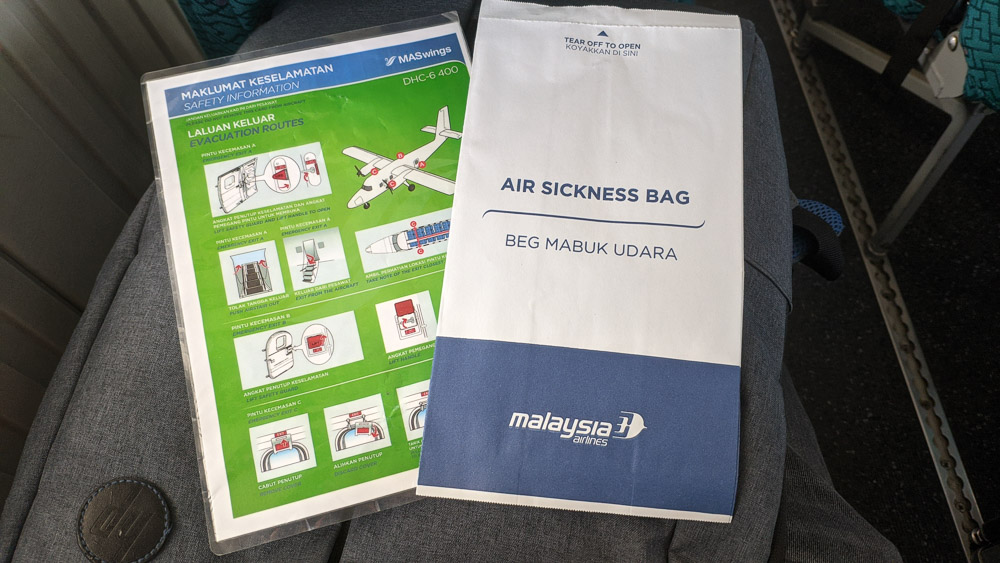
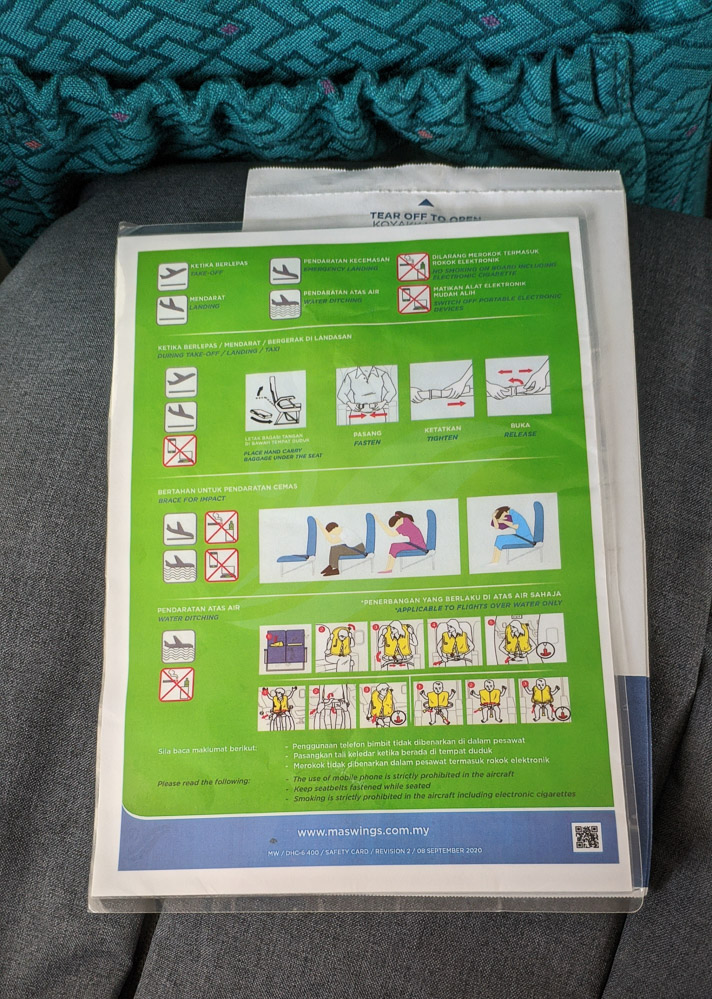
The seat pocket was also filled with the standard items – a Malaysia Airlines branded air sickness bag, and a safety card for the DHC-6 Twin Otter.
Onboard Catering
You don’t get a snack service onboard, but a MASwings staff handed out a pack of sanitising wipes, salted peanuts, and a small bottle of water on the ground at Miri just before boarding. Not bad at all.
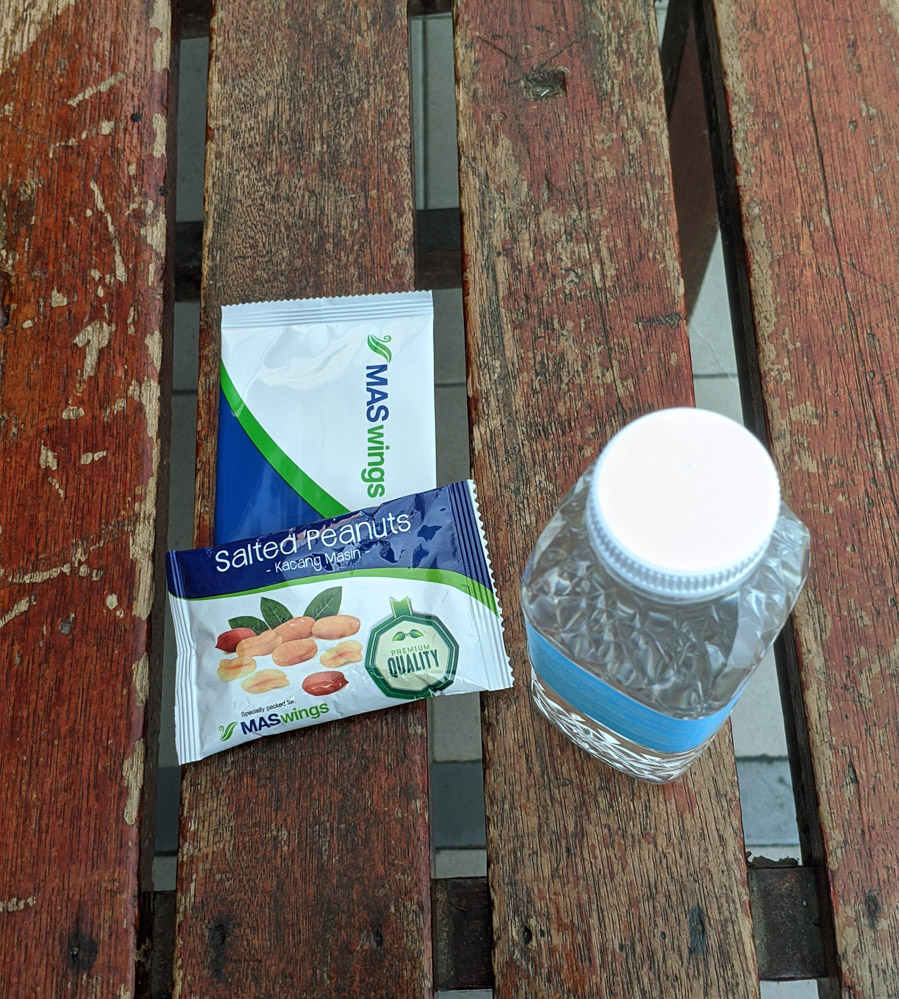
The view outside – Northern Sarawak from the air
The only entertainment available onboard is the view from the big windows. The comparatively low cruising altitude made a great opportunity to take in the landscape below – the transition from the suburban outskirts of Miri, to the sprawling plantations that replaced the once mighty and enormous Sarawakian rainforest.
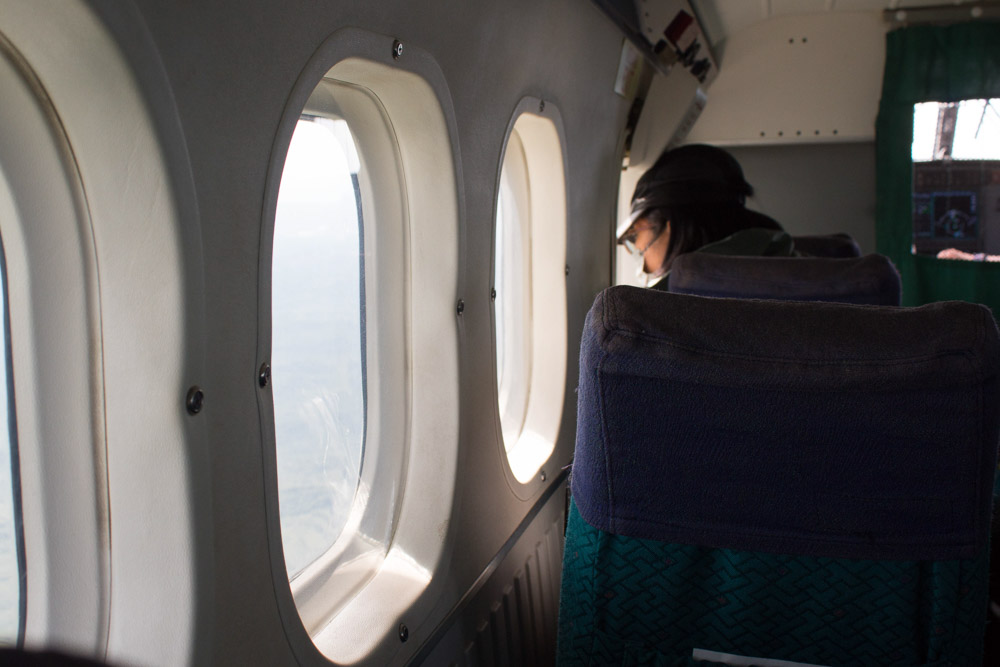
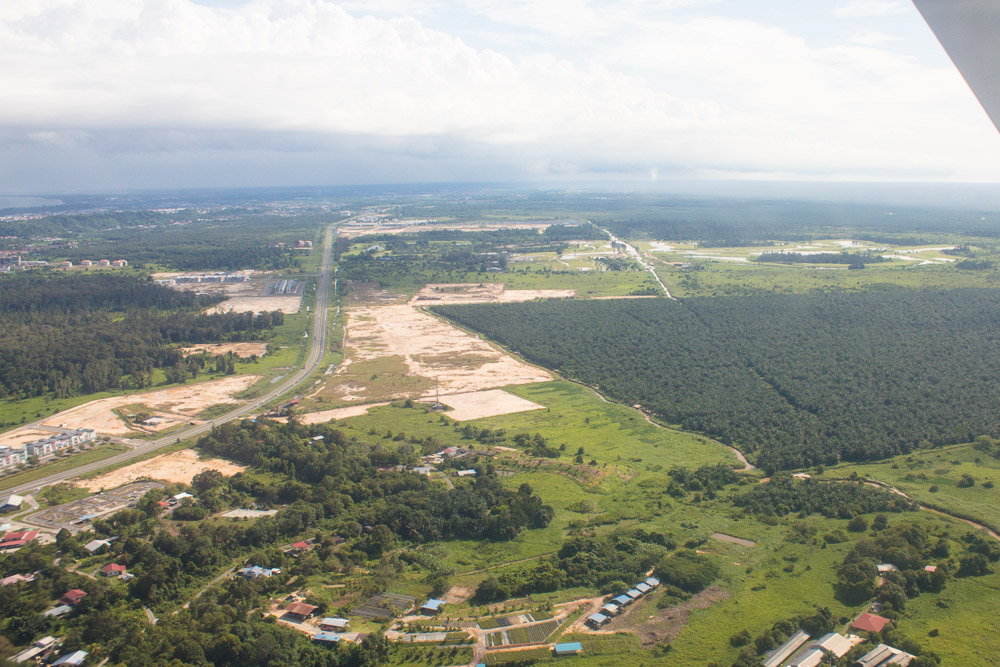
The northern Sarawakian landscape was quite something to behold. I’ll let the pictures and the captions do the talking. A notable sight was the distinctive jagged peaks of the Bukit Lambir National Park.
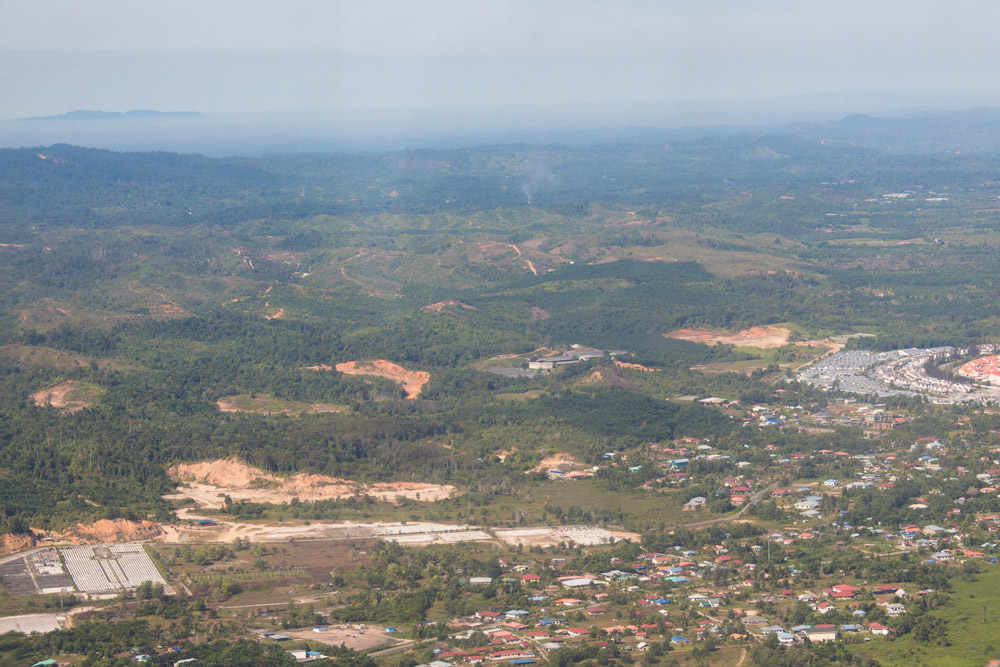

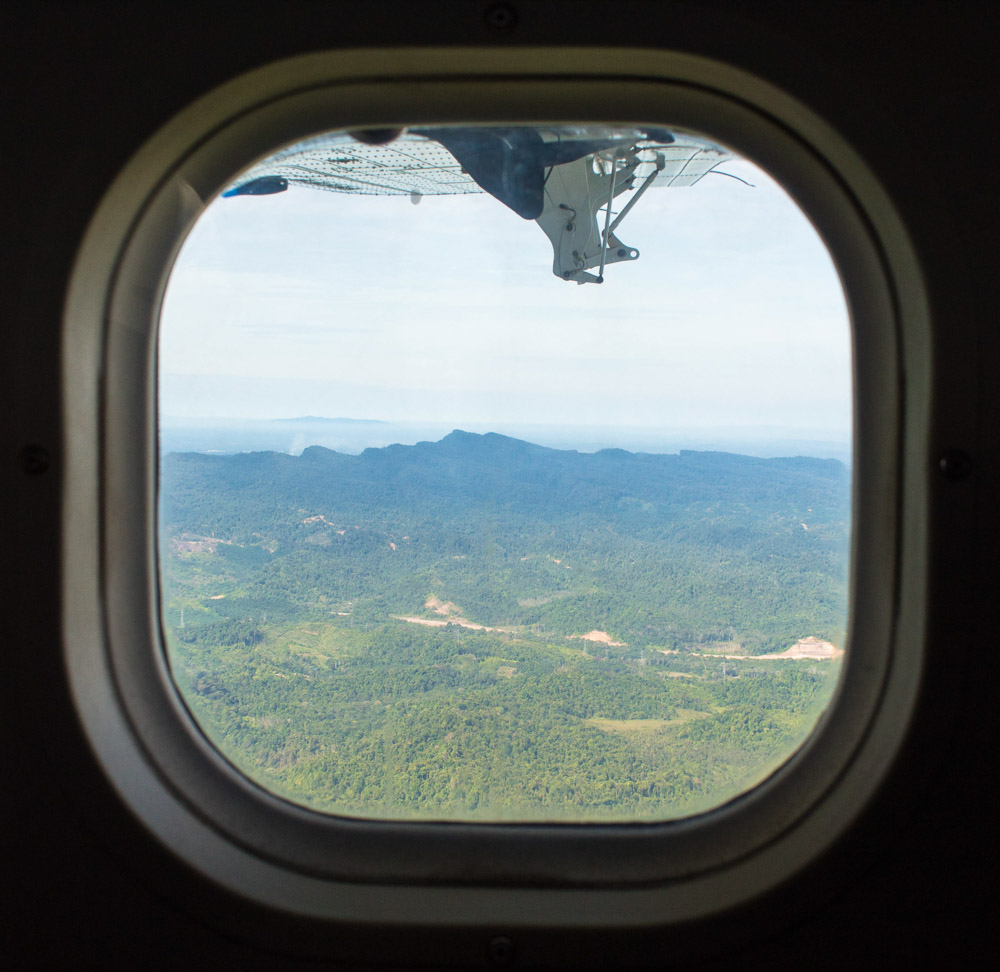
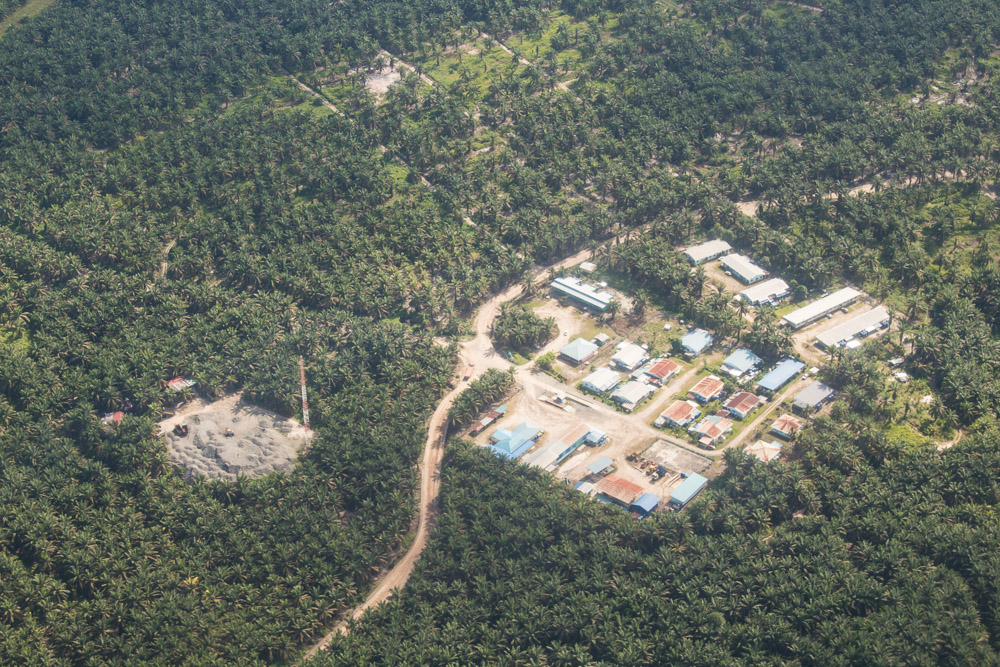

If you squinted far enough, you can spot the surviving parts of the rainforest on the Brunei side of the border. The deforestation of the Sarawakian rainforest is unfortunately not a recent occurrence, and has occurred consistently for the past decade.
Arrival at Marudi Airport
Despite the scheduled flight time of 20 minutes, the actual flying time was only between 10 to 15 minutes. If you are used to longer flights, this can feel a little bit jarring.
The approach and landing experience was unlike any other – The pilots simply lined the little aircraft up with the runway and pointed the nose down. There are no onboard announcements (or the cabin was deafened by the engines), so the clearest indication that you are about to land is when the plane is tilted downwards.
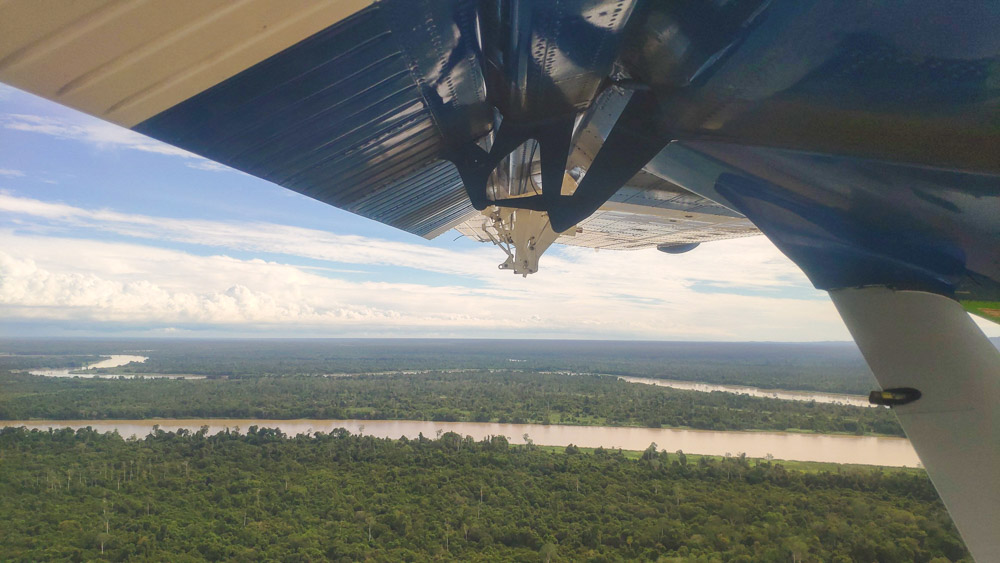

Twin Otters descend fast, and you’ll be on the ground before you know it.
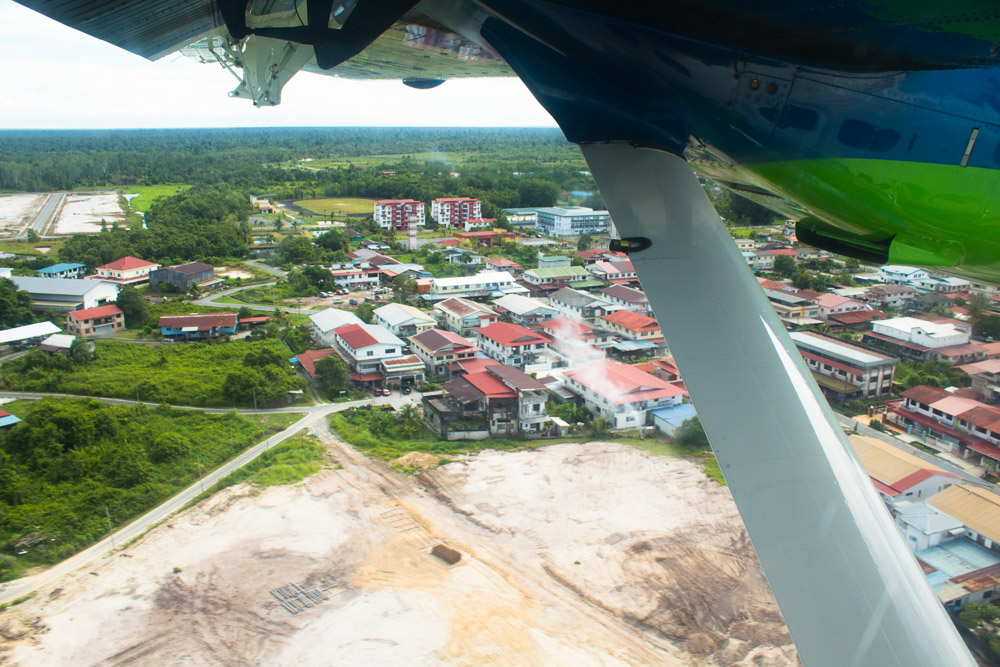
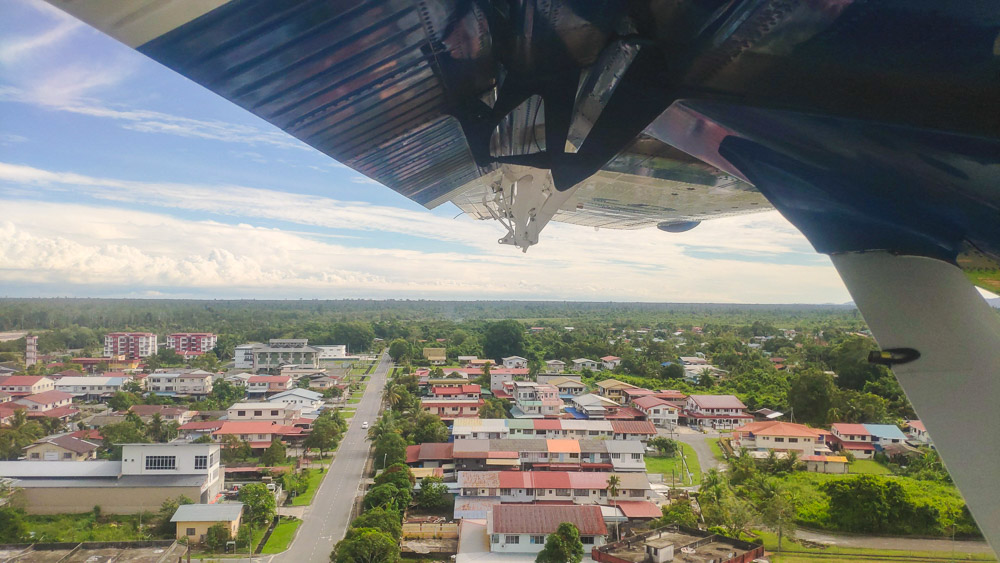
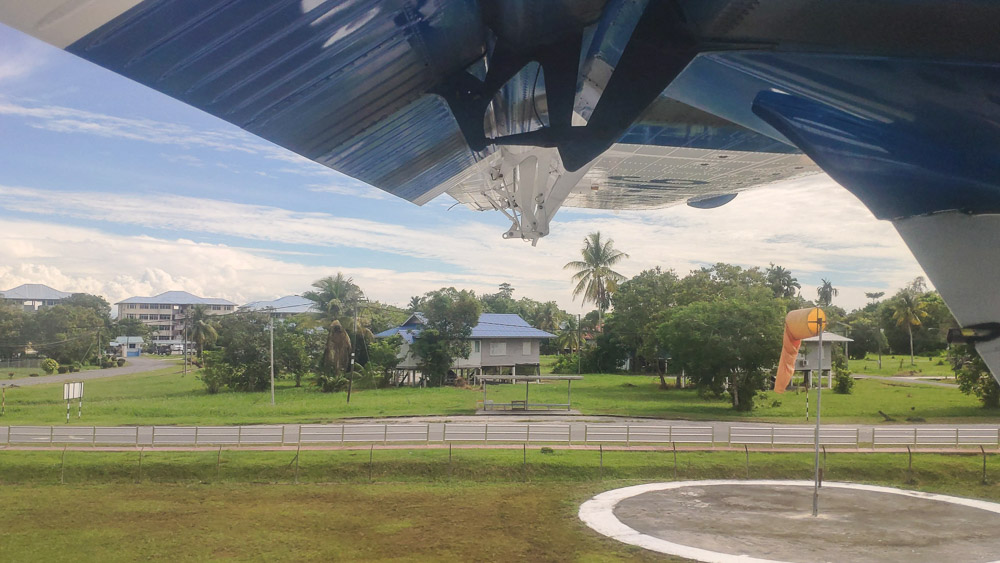
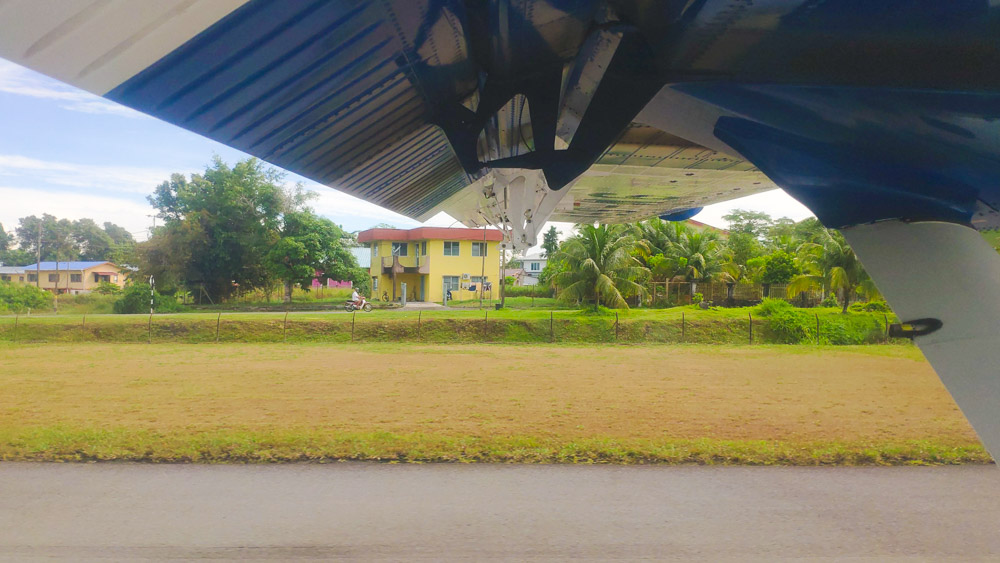
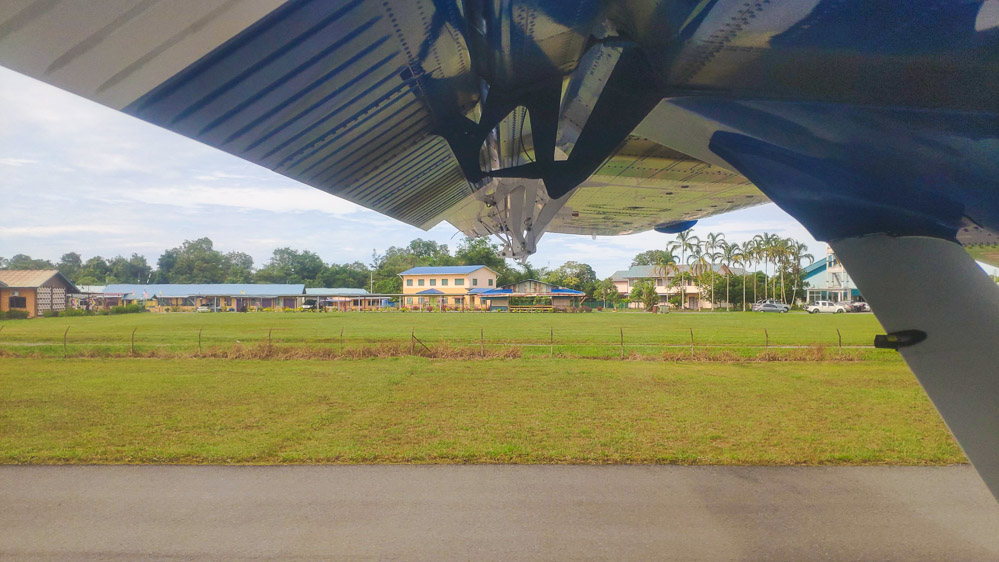
There are no parallel taxiways at Marudi, so aircrafts usually have to make a turn on the runway and backtrack the short distance to the terminal.
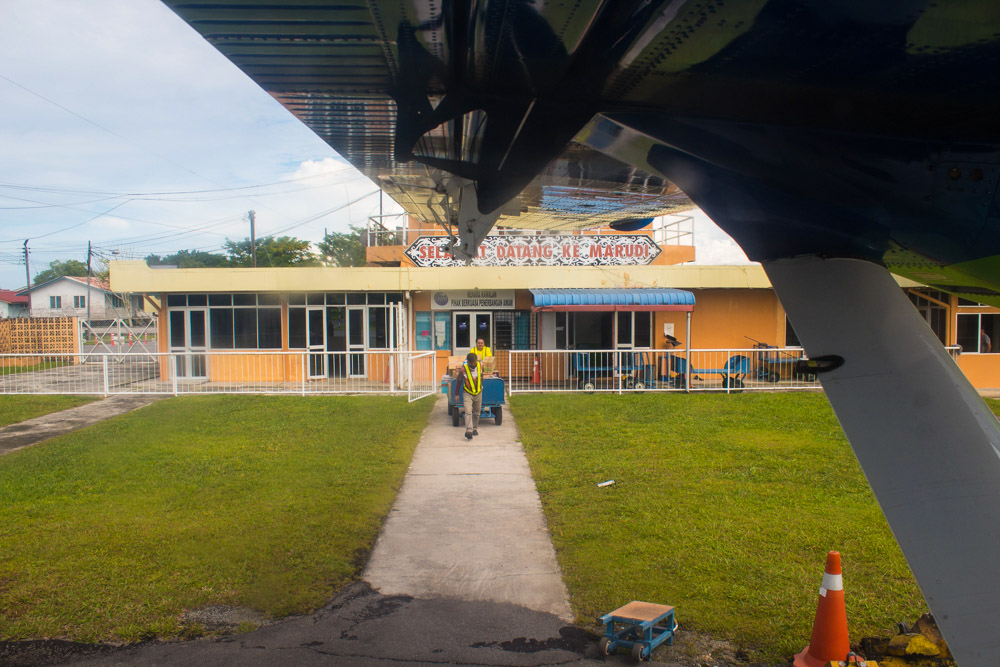
The disembarkation process at Marudi is incredibly simple – walk down the airstairs, straight into the arrival corridor, and you will emerge at the front foyer of the terminal. If you have no luggage to collect, you’ll be out and about within a minute. I found this a hilariously efficient process (take that Changi!), but as the whole setup is also great for aviation photography, I took my own sweet time making my way landside.
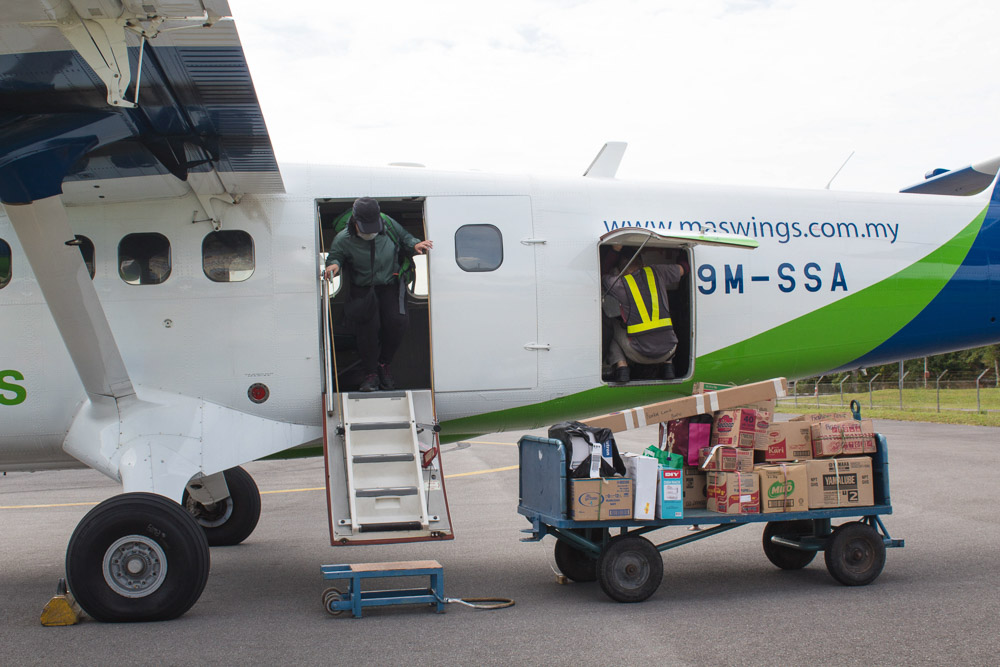
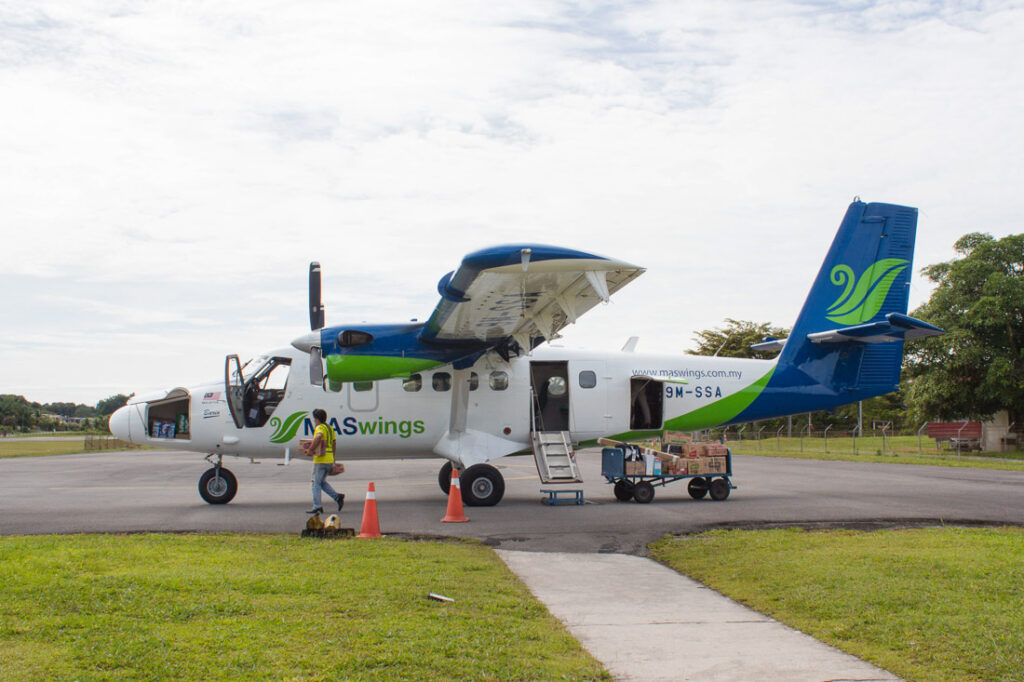
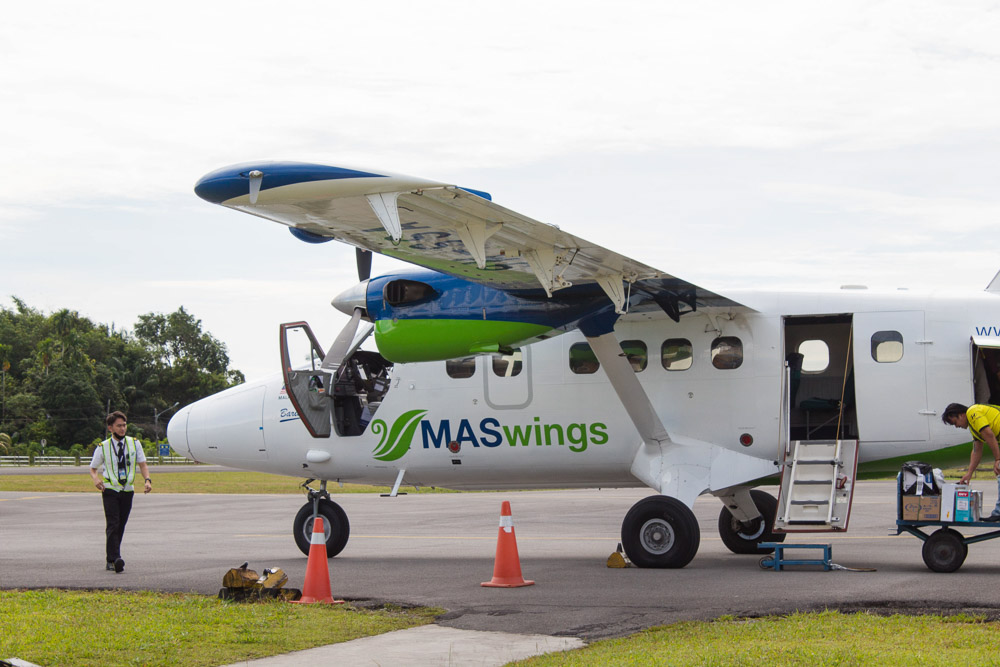
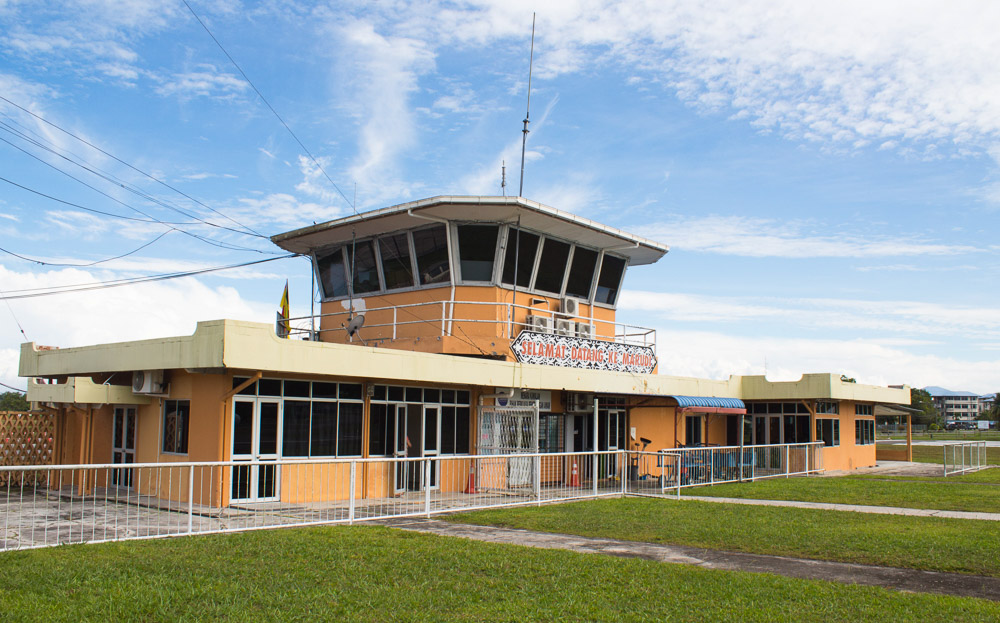
Final thoughts
This was definitely an enjoyable morning flight and a very good introduction to the interior areas of Sarawak and all of its transportation and access woes. The re-booking annoyance aside, MASwings made a good enough first impression on me that I will be happy to fly with them again in the future – notwithstanding that they are the only option for these routes.
Read about my exploration of Marudi here, and the return flight to Miri here.

Comments
5 responses to “Malaysia’s Rural Air Service: Flying from Miri to Marudi on a MASwings Twin Otter”
[…] whole experience reminded me of my MASwings Twin Otter flight from Miri to Marudi, although Ronaldsway has proper baggage carousels which Marudi […]
[…] had an enjoyable flight out of Miri on the outbound sector, and I was interested to see how a departure from a small, rural airfield like MUR would contrast […]
[…] ground experience at Miri Airport (MYY) was identical to my experience from my flight to Marudi the day before. As I had checked in online, the only thing left for me to do was to have my bags dropped at the […]
[…] fastest way of getting to Marudi is by air. Marudi is connected to Miri by the Rural Air Service (RAS) flights operated by MASwings. The flights are operated by Viking DHC-6 Twin Otters, and are a great showcase of the aircraft’s […]
[…] MASwings flight MH 3590 from Miri to Marudi […]